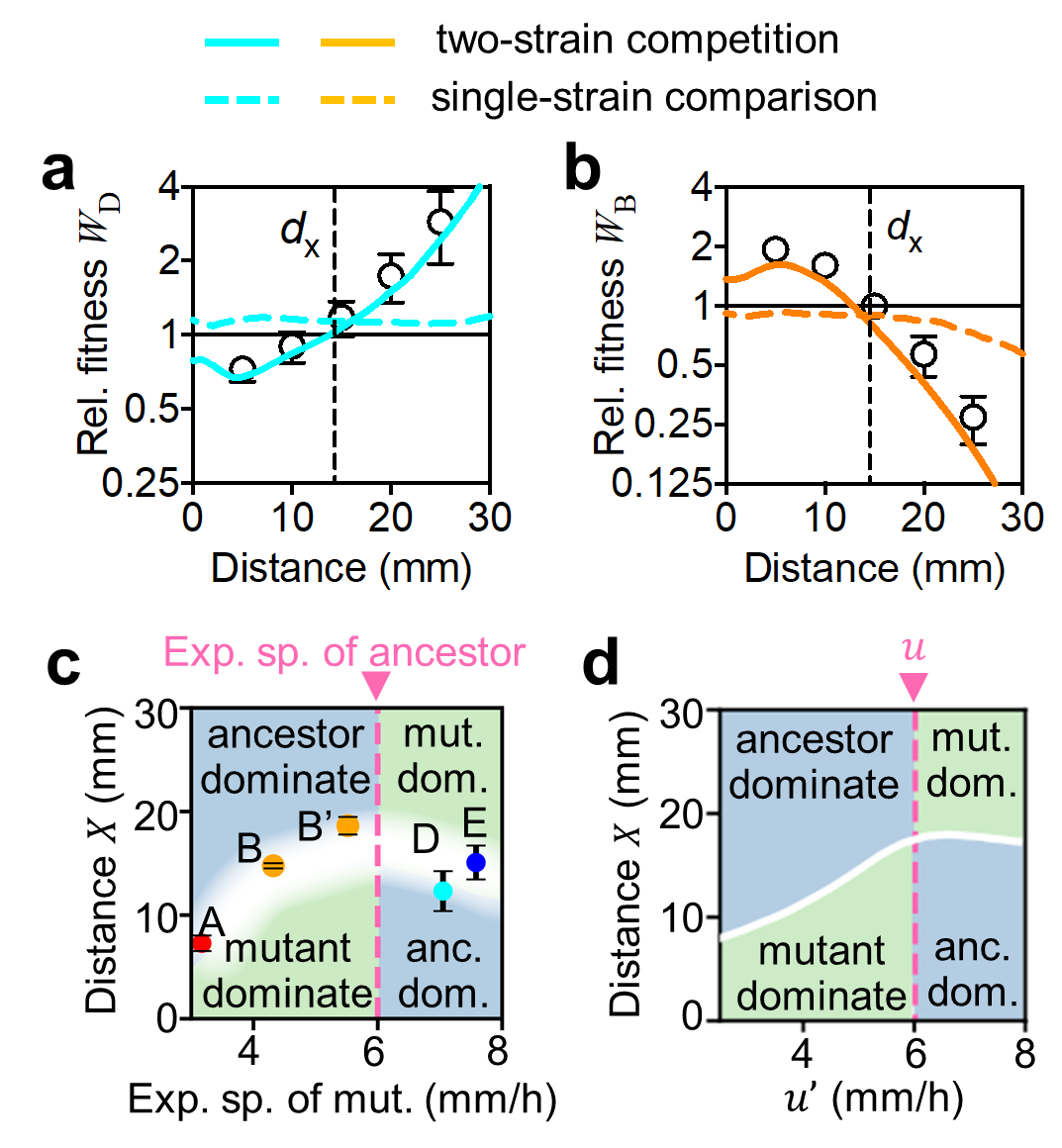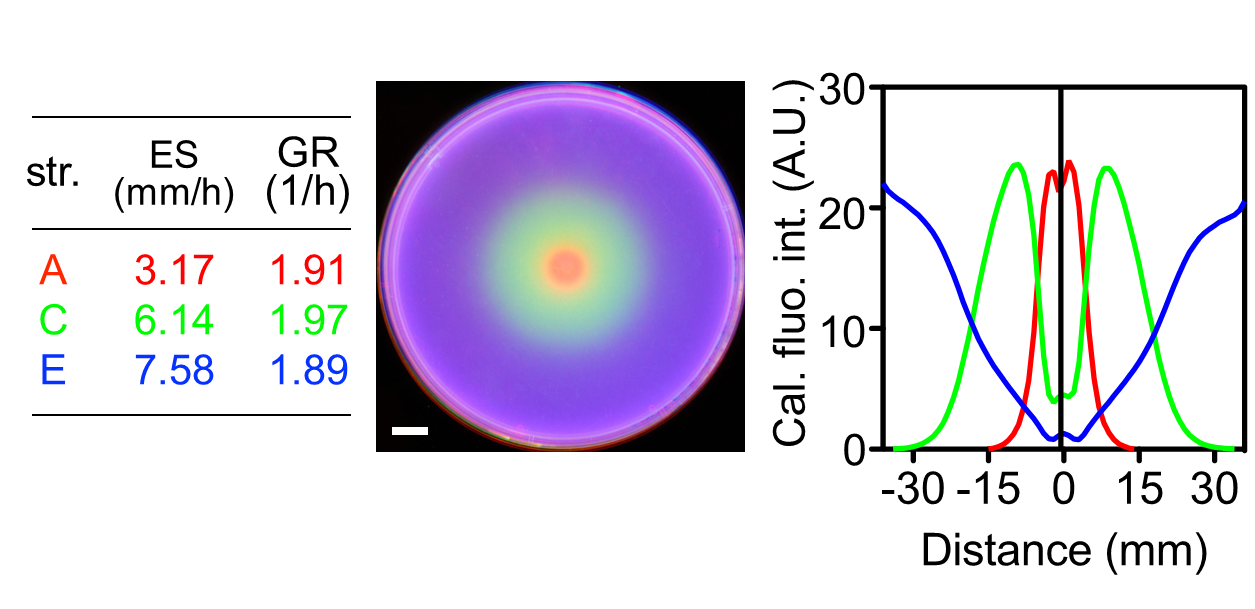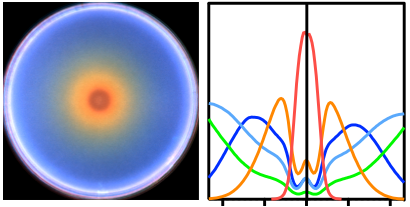
On November 7, An article named “evolutionarily stable strategy to colonize spatially extended habitats” and written by Chenli Liu Laboratory from SIAT and Taili Hua's laboratory form the University of California San Diego was pubished. This research combines spatial colonization, experimental evolution, and synthetic biotechnology to study the optimal strategies for species spatial colonization. The study find that for space colonization, it is not that the population with a faster migration rate has the advantage. Too fast migration rate will make the population unstable and easy to be invaded by the population with small migration rate. The colonization of the population in different size habitats corresponds to an optimal migration and growth strategy.
Through a simple mathematical relationship, the research team summarized the evolutionary strategy of bacteria to achieve spatial distribution and diversity through a balanced growth and movement evolution strategy. The results provide theoretical guidance for constructing stable synthetic multicellular systems, explaining how to maintain biodiversity in a homogeneous environment, or predicting optimal strategies for species migration and colonization. SIAT is the first author and the last corresponding author of the article.
The research is supported by the Key Laboratory of Quantitative Engineering Biology of the Chinese Academy of Sciences, the Major Program of the Fund Committee, the Pilot Project of the Chinese Academy of Sciences, and the Shenzhen Institute of Synthetic Biology.
Article link: https://www.nature.com/articles/s41586-019-1734-x

Figure 1. Bacterial Population Migration and Evolution Experiment

Figure 2. Universality of Competitive Migration Distribution of Bacteria

Figure 3. Synthetic Bioengineered Strains Verify Competitive Migration Distribution

Figure 4. Spatial distribution of Three Evolutionary Mutants

Figure 5. Quantitative Law of Bacterial Space Migration and Colonization

Figure 6. Theoretical Prediction of Coexistence of Multiple Populations in the Verification Space of Synthetic Bioengineered Strains